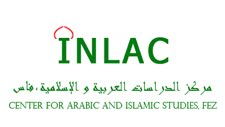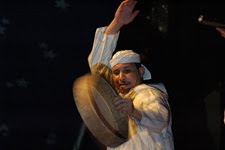Management is a skill (start) completed pekerjaa n, reaching the goals set by the organization of existing resources, especially human beings; Management is knowledge (knowledge) and / or the arts (art) finish the job
In achieving ü the stated goals of the organization, the manager function (tasks), called manaje men or managerial functions. Here one of the managerial functions abbreviated concept POAC derived from the George R. Terry. K epanjangannya:
B. Indonesia SDM according to Wikipedia is: "P otensi contained in man, which is capable of managing himself, as well as manage the potential inherent ü in nature, towards the achievement of prosperity in a manner that is balanced and sustainable".
HR is the potential that an asset or capital (non-material ü and non-financial) in business organizations, which can translate into real potential (real) physical and non-physical in realizing the organization's existence.
It should be understood, that the manager or head of the company as well as employees. Only those called managerial employees, while employees who are not managers ü called operational employees. Managerial employees, are those who have subordinates, subordinates. ü
M anagement HR (Sincere, 1992: 3) is the planning, organizing, directing, and oversight of procurement, development, compensation, integration, maintenance and termination of employment ü with a view to helping achieve the company's goals, individual ü goals and objectives of the community.
Personnel management emphasizes results, while emphasizing the commitment of human resources management. Personnel management sees humans as a cost, or fa c tors of production; whereas HR management sees humans as capital or investment (Simamora, 1995: 3-4).
Emphasizes personnel management administrative functions, ü while emphasizing ü the strategic management of human resources within the organization, which is integrated with all other functions in the organization ü (Eka Nuraini Ravhmawati, 2004: 1).
Aspect 1: so-called managerial aspects include activities (POAC) - already mentioned above. ü
To achieve the above objective, a series of HR management tasks as follows: Make SDM satisfied (satisfaction) in order to then be able to satisfy both internal and external customers as colleagues, superiors, subordinates, organizations, communities (Sincere, ü 1992: 3).
You will carry out the role or function of the following distinctive, ü which also became the focus of the lecture HR management: recruitment Function Function Function performance ü appraisal training and development compensation Function Function maintenance and termination of the HR function to build a healthy industrial relations
Bibliography HR Management Ambar Teguh Sulistiyani & Rosidah, Human Resource Management - Concepts, Theory and Development in the Context of Public Organizations, Graha Science, Yogyakarta, 2009. Edy Sutrisno, Human Resource Management, Kencana, Jakarta, 2009. Eka Nuraini Rachmawati, New Paradigm of Human Resource Management - Achieving Competitive Advantage For Base, Ekonisia-FEUII, Yogyakarta, 2004 Faustino Cardoso Gomes, Human Resource Management, Andi, Yogyakarta, 2003. Hesel Nogi S. Tangkilisan, Human Resource Management Public Bureaucracy, Lukman Offset & Foundation for Public Administration Reform Indonesia, Yogayakarta, 2003. Haris Mujiman, Management Self-Study-Based Training, Student Library, Yogyakarta, 2009. Henry Simamora, Human Resource Management, BPSTIE YKPN, Yogyakarta, 1995. Heidjrachman & Suad Husnan, Personnel Management, BPFE, Yogyakarta, 1993. John Suprihanto, Personnel Management, BPFE, Yogyakarta, 1987. Kisdarto Atmosoeprapto, HR Towards Empowerment, Elex media Komputindo, Jakarta, 2000. Kisdarto Atmosoeprapto, Empower Your Human Resources, Scholastic, jakarta, 2002. Lina anatan & Lena Ellitan, Human Resource Management in Modern Business, Alfabeta, Bandung, 2007 Larry R. Smalley, Orientation and Pelatihaan At Work, PPM and Library Binaman Pressindo, Jakarta, 2000. Les Donaldson & Edward E. Scannel, Human Resource Development - Beginner's Guide for Coaches, Style Media Pratama, Jakarta, 1993. Moh. Agus Sincere, Human Resource Management - Student Handbook, Gramedia, Jakarta, 1992. Moh. As'ad, HR Series Sciences - Industrial Psychology, Liberty, ü Yogyakarta, 1987. Michael Armstrong, ü Performance Management, Tugu Publisher, 2004. Noor Ahmad Fuad & Gofur, Integrated HRD Human Resources Development, Grasisndo, Jakarta, 2009. Payaman J. Simanjuntak Management Performance Evaluation, FEUI, 2005. Randall S. Schuler and Susan E. Jackson, Human Resource ü Management - Facing Century 21- Volume 1 and II, Erland
 The View from Fez is an official Fes Festival Media Partner
The View from Fez is an official Fes Festival Media Partner  Modern elegance dictionary and tranquillity in the heart of Fez
Modern elegance dictionary and tranquillity in the heart of Fez  BOOK NOW ~ info@plan-it-fez.com
BOOK NOW ~ info@plan-it-fez.com  The Arabic Language Institute in Fez
The Arabic Language Institute in Fez  RIAD LAAROUSSA - Pure luxury! dictionary
RIAD LAAROUSSA - Pure luxury! dictionary  Click to discover where!
Click to discover where!  THE LEGEND CONTINUES dictionary
THE LEGEND CONTINUES dictionary  UNIQUE ATMOSPHERE GREAT FOOD
UNIQUE ATMOSPHERE GREAT FOOD  Your base for wine tourism in France!
Your base for wine tourism in France!  Study Arabic in the heart of the Fez Medina
Study Arabic in the heart of the Fez Medina  Oasis of calm and serenity in the desert
Oasis of calm and serenity in the desert  Traditional, charming, affordable, great location
Traditional, charming, affordable, great location  Click image to see more than 2000 Moroccan photos
Click image to see more than 2000 Moroccan photos